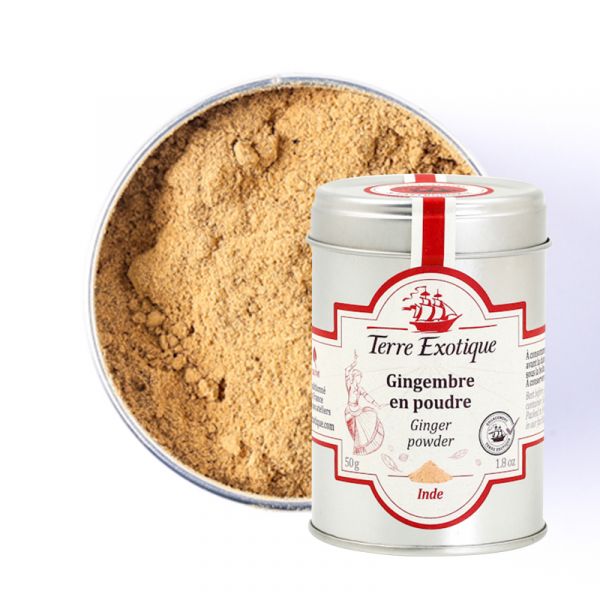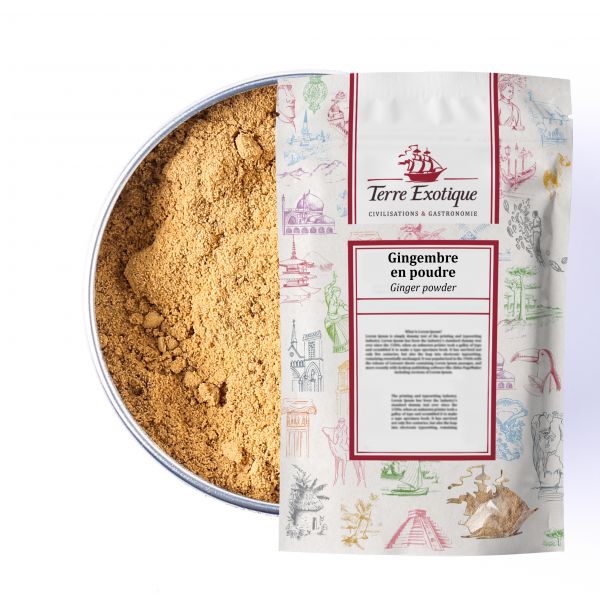





What Dishes to Use Ginger Powder In?
Explore the Flavors of Ginger
Commonly found in Indian, Oriental, and Asian cuisines, ginger is a spice that brings a unique flavor and a burst of energy to your dishes.
How to Use Ginger Powder?
Here are some recipe ideas to use ginger powder in your cooking:
· ginger chicken curry: add ½ teaspoon of ginger powder to your skillet with the chicken during cooking (find the complete recipe below);
· gingershot: add 1 tablespoon of ginger powder with 1 teaspoon of turmeric, 1 teaspoon of cinnamon, and fruit juice such as orange, apple, or pineapple;
· butternut squash puree with ginger: sprinkle 1 teaspoon of ginger powder into your butternut squash puree;
· fish curry: add 1 teaspoon of ginger powder to your onions while they cook;
· apricot ginger jam: add 1.5 teaspoons of ginger powder to your jam during cooking;
Discover the recipe for fortune cookies
The Recipe for Ginger Chicken Curry
Ingredients
250 g of chicken breasts;
10 cl of coconut milk;
1 sliced onion;
1 teaspoon of Madras curry powder from Terre Exotique;
½ teaspoon of ginger powder from Terre Exotique;
1 sliced onion;
a drizzle of olive oil
2 pinches of Terre Exotique diamond salt powder;
2 pinches of crushed Penja black pepper from Terre Exotique.
Instructions
Heat a skillet with a drizzle of olive oil and brown your sliced onion for 3 to 5 minutes.
Meanwhile, cut the chicken breasts into cubes and add them to your skillet, season with salt and pepper then add the curry and ginger along with the coconut milk.
Cook everything for 5 minutes, stirring occasionally. Serve this dish with basmati rice or Thai rice.
Click here to discover the recipe for homemade curry with ginger powder
Flavors and Aromas of Ginger
Ginger is exceptional for its freshness in the mouth and its sweet and lemony flavors. Ideal in sweet potato puree, with prawns, in homemade jam, in a salad of fresh fruits, or in a stir-fry of wok vegetables.
Ginger and Its Botany
A Rhizome Full of Flavors
This Indian ginger is harvested by hand. This perennial tropical plant, whose botanical name is Zingiber officinale, comes in the form of a tuber. This rhizome belongs to the same botanical family as cardamom, turmeric, and Kororima from Ethiopia, the Zingiberaceae family. The Indian plant, after 10 months of growth, can reach up to 1 meter in height, but the part used is actually the underground part, the root, also called rhizome. Ginger requires significant heat to develop properly; it is impossible to grow it in your garden in Europe.
Ginger Throughout History
Arab merchants called ginger "zenj," a word that referred to the inhabitants of the East African coast. In the Middle Ages, ginger was considered a magical plant because of its aphrodisiac properties!
In the 18th century, ginger was stored in a container called a "ginger pot"; in China, it was the gift given to brides and grooms as a sign of fertility.
In Europe, the most famous painters such as Cézanne and Van Gogh immortalized these pots by painting them. As you can see, ginger is a spice that has been used forever and is still very present in the kitchens of France and beyond.
Our Indian supplier is an NGO working for farmers. To help them transition to organic farming, 50 farmers from 5 different villages are trained in this type of agriculture. Thanks to this approach, more than 500 farmers have embraced the principles of organic farming!
| Allergen | Absence |
|---|---|
| Native country | INDE |
| Genus and botanical species | Zingiber officinale |
| Ingredients | ginger powder |
| TRACES EVENTUELLES D'ALLERGÈNES | céleri, sésame, moutarde, fruits à coques. |
 Français
Français 
